The Bugs that Plagued the Dinosaurs
Palaeoentomology, this term may not trip off the tongue but bear with us, for thanks to an amazing new book published at the end of this month, a window into an as yet little explored prehistoric world has just been opened.
Fossil Insects – Exploring Ancient Prehistoric Arthropods
Picture credit: Manchester University Press Office
Palaeoentomology
Palaeoentomology, is really two words combined into one, firstly, there is “palaeo” from the Greek meaning ancient and then we have “entomology”, which relates to the study insects. Put it together and you have the study of ancient insects and this new publication “Fossil Insects, An Introduction to Palaeoentomology”, combines two essential elements of science into one excellent volume. Firstly, there is the scientific study and analysis, in this case provided by authors Dr David Penney and James E. Jepson and secondly, there is the ability to illustrate long extinct creatures and to resurrect them so that the reader can gain an appreciation of the living animal.
The artwork for this book has been provided by Richard Bizley, a British-based artist and scientific illustrator and what a visual treat Richard provides.
Mayflies Mixing with Dinosaurs
Picture credit: Richard Bizley Bizley Art.
Fossil Insects
Over the last three decades or so, scientists have begun to learn so much more about ancient insect life. These small (and not so small), terrestrial arthropods that scuttled, climbed, burrowed and flew formed an integral component of some of the first complex ecosystems to evolve on land. New research methods and techniques have been applied, revealing details of the lives and behaviours of insects, assisting palaeontologists as they reconstruct the habitats and climates of pre-history.
It might be surprising to some, especially when how delicate insects seem to be, but insect fossils are relatively common and yet there is so much to learn and discover. Dr David Penney from the University of Manchester has drawn on his knowledge of both entomology and palaeontology to provide a guide to the fossil record and this book both informs and educates.
“Fossil Insects” Provides Plenty of Colour Photographs of Stunning Fossils
Picture credit: Manchester University Press Release
From a vertebrate palaeontology perspective, insects have a huge advantage when it comes to the fossil record. As Dr Penney points out, the Insecta is the most diverse Class in the Kingdom Animalia but more importantly, fossils preserve insect behaviour and activity as well as the insects themselves. Fossils showing feeding damage on leaves and wood, faecal pellets, parasitic relationships, even evidence of nests have all been preserved, providing palaeoentomologists with a rich catalogue of fossil material to explore. Dinosaur trace fossils are rather limited in comparison.
Dr David Penney (Manchester University)
Picture credit: Manchester University Press Office
Dr Penney explains:
“Insects are the most diverse group of creatures on the planet today. Many of them were around even before the time of the dinosaurs. Bringing together entomology and palaeontology through the study of insect fossils has great potential for revolutionising what we know about both subjects.”
Many insect fossils can be found as inclusions in amber, often as virtually perfect three-dimensional forms. Amber is fossil tree resin. Insects and other organisms can become entombed in the sticky resin and fossilised when it hardens into amber. This book features plenty of stunning photographs that illustrate these miniature time capsules.
Mosquito Preserved in Dominican Amber
Picture credit: Manchester University Press Release
These amazing prehistoric insects have been brought to life in the book through the exquisite illustrations of Richard Bizley. He depicts long vanished arthropods in a unique collaboration with the authors. Team members at Everything Dinosaur had the very great pleasure of meeting up with Richard in his Dorset studio and viewing some of the artwork that was being prepared for inclusion in this book. Richard’s astonishing eye for detail and scientific accuracy has enabled him to reconstruct prehistoric scenes from seven of the major geological periods, starting with the rise of the insects during the Devonian and continuing through until the Tertiary.
Carboniferous Creepy-Crawlies
Picture credit: Richard Bizley Bizley Art.
To make the animals in his beautiful paintings look realistic, Richard created models using scientific drawings and pictures of fossil material. He then carefully photographed them to see how light behaved on his subjects.
Commenting on his role in helping to bring to life prehistoric environments, the artist stated:
“When reconstructing fossil insect species, special attention needs to be paid to important diagnostic features, such as the wing venation patterns and the relative lengths of appendage segments. The fact that many fossil insect species are known only from isolated wings posed additional problems. This is where collaboration with experts became very useful and I worked closely with Dr Penney to produce an accurate reconstruction based on the comparative study of both fossil and living insects.”
This book is recommended for the general reader, those interested in palaeontology as well as entomology. The term palaeoentomology (pay-lee-oh-en-toe-mol-oh-gee) may not trip of the tongue but “Insect Fossils, An Introduction to Palaeoentomology” does give the general reader a “taste” for this exciting area of scientific research.
“Fossil Insects, An Introduction to Palaeoentomology” by Dr David Penney and James E. Jepson is published on July 31st 2014 by Siri Scientific Press.
Everything Dinosaur acknowledges the help of the University of Manchester Press Office in the compilation of this article.


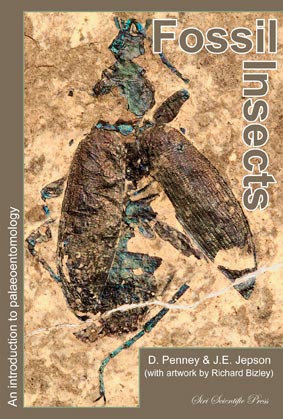
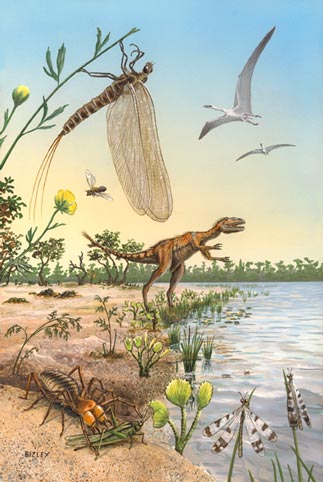
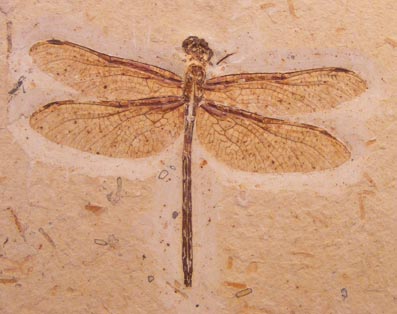
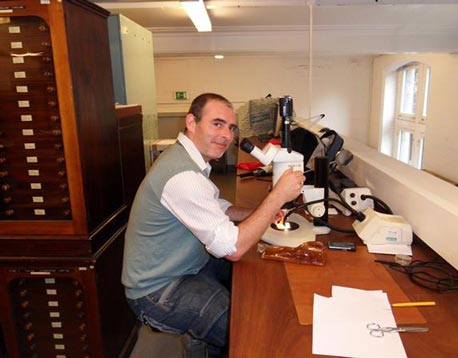
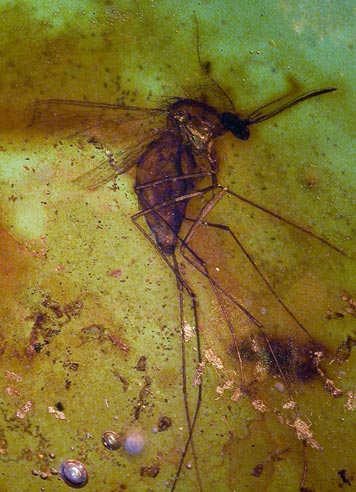
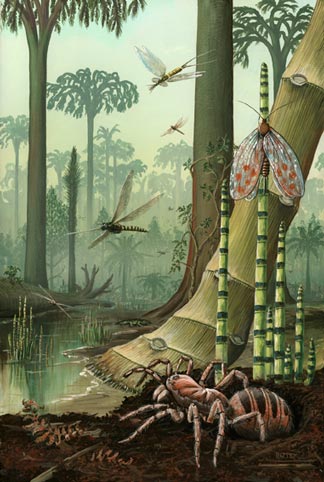




Leave A Comment